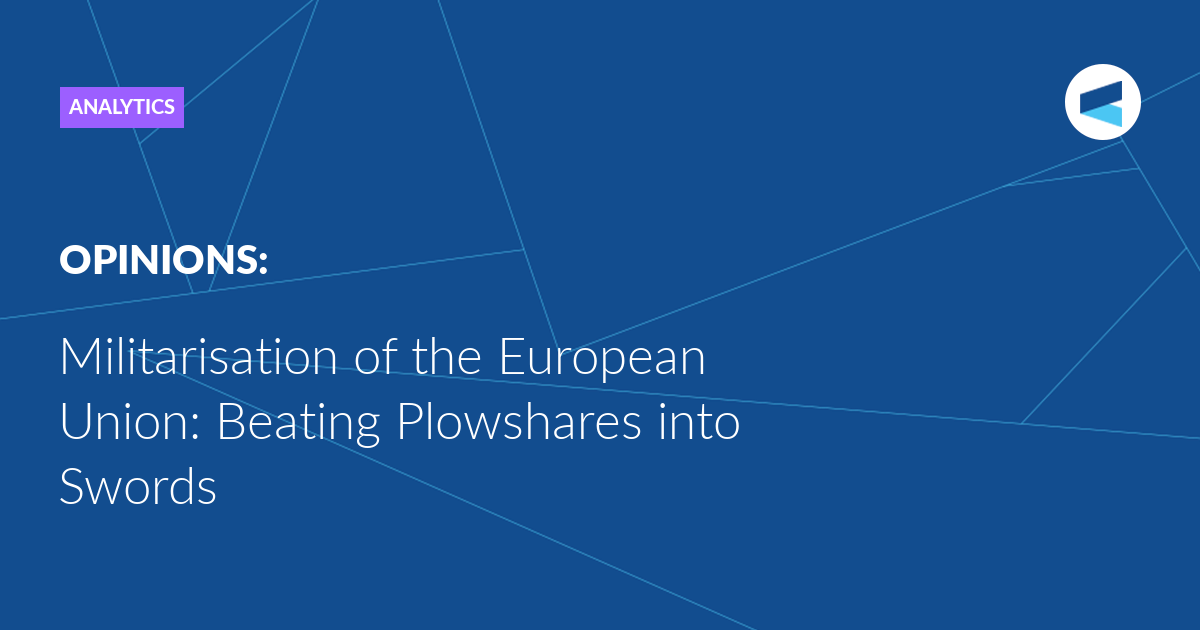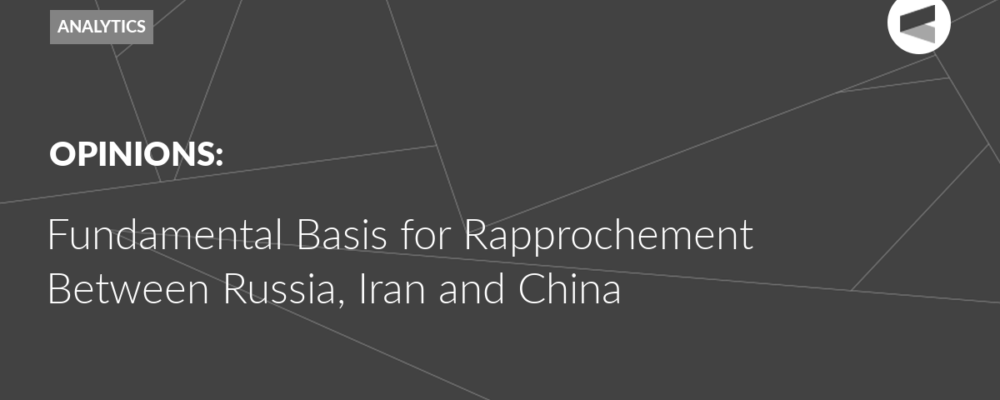At the beginning of March 2024, the European Commission adopted and published the European Defence Industrial Strategy (“Strategy”) and the European Defence Industry Programme (“Programme”). These measures were a reaction to Russia’s overall success, both amid its Special Military Operation, as well as in mobilizing the resources of its military-industrial complex. This step towards establishing a common military-industrial complex for the European Union seems logical, but one should not expect results from its implementation in the short term.
The process of integrating the military industries of EU member states into a single system has had limited results. The European Union has focused on creating the structures and incentives for integration. For example, the European Defence Agency was founded, and the Permanent Structured Cooperation (PESCO), Capacity Development Plan, and Coordinated Annual Review on Defence (CARD) programs, as well as the European Defence Fund (EDF) were launched. However, funding in this area is limited: the annual budget of the European Defence Agency is about 100 million euros, and the European Defence Fund is worth about 40 million euros. At the same time, the total military expenditures of EU countries in 2022 amounted to 258 billion euros. Accordingly, such a structure, taking into account the amount of funding, could only ensure the implementation of individual projects. Deeper integration of the military-industrial complex on an EU-wide scale has been hampered by state protectionism, and a political solution that would allow this to be overcome was never made.
The fragmented military industry of the member states was not sufficiently effective, as it gave rise to the duplication of systems and irrational use of financial, scientific and production resources, but in any case, it fully met the requirements of the time. Due to the absence of symmetrical threats, the optimisation of the military industry was carried out by reducing funding and cutting production capabilities; one of the main incentives for development was a work for export. The leadership only became aware of the problems with the EU military-industrial complex and the need to solve them after the start of the special military operation in Ukraine. The military-industrial complex, operating in a peacetime paradigm and focusing on providing armed forces in low-intensity conflict conditions, has turned out to be incapable in the framework of large-scale combat operations.
The European Union actively and immediately began to support Ukraine. Already on February 28, 2022, funds from the European Peace Facility (EPF) were allocated for these needs. In March 2022, support for Ukraine was conceptualised in the EU’s first defence strategy, the Strategic Compass, as a contribution to European security and the maintenance of a “rules-based world order.” Military assistance from the EU has become one of the most important pillars of Ukraine’s military potential. In terms of the volume of supplies, military aid from the EU and its member states is almost equivalent to aid from the United States and, according to the Kiel Institute of World Economy, amounts to more than 40 billion euros. The European Peace Facility was refocused on supplying necessary military equipment to Ukraine, and military assistance to Ukraine became the main expenditure item for this fund.
The European Union has supplied Ukraine with a wide range of weapons and military equipment, which almost completely covers the needs of modern armed forces, ranging from protective equipment and small arms to tanks, missiles and aircraft. As the conflict progressed, deliveries of increasingly heavy equipment were carried out. These supplies were supposed to provide solutions to the operational tasks of the Ukrainian Armed Forces. So, for example, at the initial stage of the conflict, these were mainly defensive weapons and military equipment, especially air defence systems and anti-tank weapons, later, when preparations for a counter-offensive of the Ukrainian Armed Forces began, the emphasis changed to offensive weapons and military equipment, for example, tanks.
The stocks of weapons and military equipment of the armed forces, military industry companies and specialized trade organisations which can be handed to Ukraine without a reduction in Europe’s own defence capabilities are already close to exhaustion. Since the summer of 2023, the volume of supplies being provided to Ukraine has decreased significantly, due to a lack of understanding of the strategy for further action, which negatively affects decision-making on financing, sources of supplies, and the limited volumes of arms and military equipment that can be transferred. The current circumstances require the EU and its member states to take immediate action, both to replace weapons supplied to Ukraine and to build up their own military potential, as well as to ensure new supplies.
The most immediate solution is imports. Ukraine has already received, for example, T-72B tanks from the Moroccan army, which have undergone modernisation in the Czech Republic. The inability to ensure the full supply of 1 million shells promised by the European Union in 2023 by the end of March 2024 has also forced the EU to turn to imports. The Czech Republic has taken the initiative to purchase 1.5 billion shells from already-known sources outside the EU. About 20 countries are ready to provide funding, including Canada, Norway, Germany, Belgium and Portugal.
Issues of supplying the own armed forces are also largely resolved through purchases outside the European Union. Thus, according to the data provided in the “Strategy”, from the beginning of the Special military operation until June 2023, 78% of military purchases by member states came from non-EU supplies, and 60% were supplies from the United States. For example, Poland purchases M1A1 Abrams tanks from the United States, as well as K2 tanks from South Korea, which is becoming an important supplier to EU states. K9 howitzers (Estonia, Finland, Poland) and K239 multiple launch rocket systems (Poland and Romania) are also purchased there. Finland, the Czech Republic and Germany plan to purchase F-35 fighters from the United States, due to the lack of European fifth-generation fighters. A sixth generation fighter, the so-called Future Combat Air System (FCAS) is being developed in the EU, but mass production is still a long way off.
The current production capabilities of the EU military-industrial complex cannot fully meet the operational needs of both the member states and Ukraine. For example, in May 2023 the Bundeswehr signed a contract for the purchase of 18 Leopard 2 A8 tanks. The first tanks will be delivered in 2025, and the entire volume will only be delivered by the end of 2026. Problems with the production of artillery shells have already been noted above. In October 2023, the EU launched the Act in Support of Ammunition Production (ASAP), which is aimed at increasing the production of ammunition in the EU in the period, from 2023 to 2025. In March 2024, grants were allocated to relevant enterprises to increase production capabilities, but a rapid increase should not be expected.
“Strategy” and “Programme” are ambitious projects that are aimed at increasing the efficiency of the military-industrial complex of the European Union; this is a logical stage in the development of EU integration in this area. Within the framework of the projects, it is planned to increase domestic trade in arms and military equipment, develop a joint procurement instrument, implement joint planning programs for the supply of the armed forces, and support joint military R&D. However, these measures will also not ensure the mobilization of the military-industrial complex of the European Union here and now. It will probably not be possible to speed up those processes that did not develop so actively in the previous period, especially taking into account the contradictions within the EU due to the protectionism of member states and the demands for urgent supplies of arms and military equipment to Ukraine.
Thus, although the EU’s own military industry potential does not allow it to fully satisfy Ukraine’s operational needs, the European Union has the tools, including financial ones, to continue supplies. Long-term planning for the integration of the EU military-industrial complex and the development of its production capabilities reflects the EU’s vector towards increasing confrontation with Russia, which is seen as the main threat to European security. The “Strategy” consolidates the course towards the militarisation of the EU, especially taking into account the plans of Ursula Von der Leyen to establish the post of Defence Commissioner and by Josep Borrell to develop the integration of the military industry.
However, for now, all of these are only
proposals and projects; their implementation will be determined by how they can
be integrated into current long-term planning, including plans tied to export
contracts, as well as the possibilities for creating new production facilities
and modernising old ones, which will require significant financing. The preservation
of the EU military-industrial complex and commitment to this vector of
development will depend on the interest of both the Union itself and the member
states. Russia’s successes on the battlefield, which are already noticeable from
the advancement of its armed forces, should reveal the futility of continuing
support to Ukraine and the development of the confrontation on the part of the
European Union.
The Valdai Discussion Club was established in 2004. It is named after Lake Valdai, which is located close to Veliky Novgorod, where the Club’s first meeting took place.
Please visit the firm link to site






